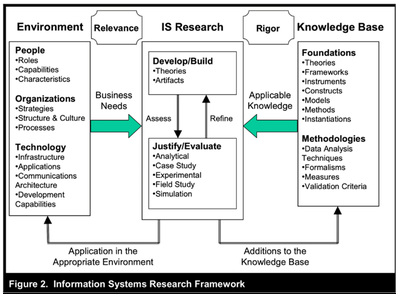Philosophy and Social Research
Which philosophical and scientific-theoretical positions underlie Design Science Research, and how do the methods of social science research integrate into the design process?
Edited by Lisa-Katharina Möhlen
Every paradigm can be assigned to one or more scientific-theoretical positions. To make this assignment for DSR, we first outline the philosophical foundations (Guba, 1990). This serves as a premise to classify one’s own research. In a second step, the DSR paradigm is assigned to one of the scientific-theoretical positions (Goldkuhl, 2011). On one hand, the emergence and development of DSR are discussed (Hevner et al., 2004), and on the other hand, the significance of the scientific-theoretical position for one’s own research activities is elaborated using a social science example.
Step 1: Overview of Scientific-Theoretical Positions
Following Kuhn (1976), Guba (1990, p. 17) understands a paradigm as
“[…] a basic set of beliefs that guides actions, whether of the everyday garden variety or action taken in connection with a disciplined inquiry.”
Thus, every paradigm is subject to its own (normative and ideological) notions that shape actions in general and research in particular. It is worth mentioning that the positions, and thus paradigms, are ontologically divided into realist, non-realist, and critical theories. To classify DSR (in the social sciences), the four major scientific-theoretical positions are relevant (see Figure 1).

- Positivism: Non-realist theory that states there is a reality that can be observed, predicted, and influenced (ibid., pp. 19f.).
- Pragmatism: Non-realist theory that states actions always contribute to the (further) development of practice and thus have practical utility (Goldkuhl, 2011).
- Constructivism: Non-realist theory that states life reality is constructed and thus also subject-dependent (ibid., p. 25).
- Critical Theory: Societal critical theory that states social power and domination relationships shape actions, and this is subject-dependent, constructed, and political (Guba, 1990, p. 24).
In summary, it is evident that the four outlined scientific-theoretical positions fundamentally differ from each other. It is all the more important to position one’s own research paradigmatically. Such positioning allows defining the central understanding of science.
Step 2: DSR & the Philosophy of Science of Pragmatism
Emergence, Development, and Positioning
DSR developed in the 2000s. The recognition as a paradigm is attributed to Hevner et al. (2004). The author describes the goal as
“extend the boundaries of human and organizational capabilities by creating new and innovative artifacts.”
It becomes clear that a scientific-theoretical position of change and design is adopted. Goldkuhl (2011) describes that there have been repeated attempts to position DSR. Although there is no common consensus yet about the positioning within a scientific-theoretical position, he himself advocates for the positioning in the non-realist theory of pragmatism with the justification of the
- Functional aspect with the design of artifacts and the development of theory and methods.
- Referential aspect focusing on (further) developments and actions.
- Methodological aspect as (further) development of knowledge stocks through making/doing. (ibid., p. 84)
Classification of One’s Own Research Using the Example of Social Sciences
First, it is necessary to examine the foci and emphases of the various scientific fields since DSR was primarily developed and tested in the context of Information Systems:
- Social sciences explain reality, researching social contexts and systems.
- Information Systems design reality and research socio-technical systems and contexts.
This does not mean that the respective disciplines do not also deal with explaining and designing. The question of HOW is inherent in the scientific fields. It is about analyzing and explaining phenomena. Using Figure 2, it is illustrated what role social science research can play in the context of DSR.

The left part of the graphic refers to the research of overall contexts, in other words, socio-technical systems. The social sciences contribute by researching how and what significance the further development of innovative artifacts has for human and organizational abilities and skills. Another intersection of DSR and social science research designs can be found in the research methods. This is exemplified in the context of qualitative social research using interviews. For example, expert interviews (Meuser & Nagel, 1991) can be used to systematically assess research relevance and incorporate expert knowledge into the design of artifacts. But not only qualitative, also quantitative or mixed-method research designs (Kelle, 2014) are suitable in the context of DSR.
References
- Goldkuhl, Göran (2012). Design Research in Search for a Paradigm: Pragmatism Is the Answer
- Guba, Egon G. (1990). The Paradigm Dialog
- Hevner, Alan R.; March, Salvatore T.; Park, Jinsoo & Ram, Sudha (2004). Design Science in Information Systems Research
- Kelle, Udo (2014). Mixed Methods.
- Kuhn, Thomas (1976). The Structure of Scientific Revolutions
- Meuser, Michael, & Nagel, Ulrike (1991): Expert Interviews—Often Tested, Little Considered: A Contribution to the Discussion of Qualitative Methods